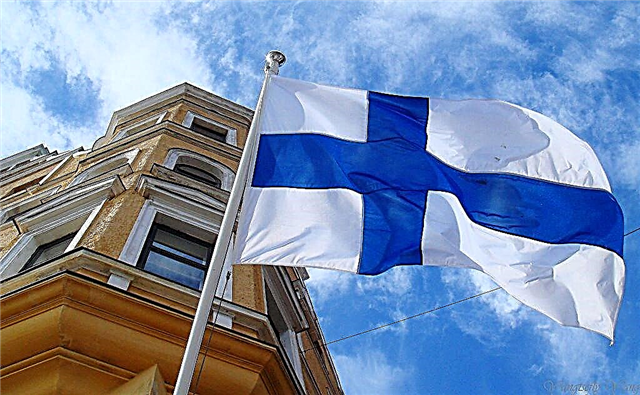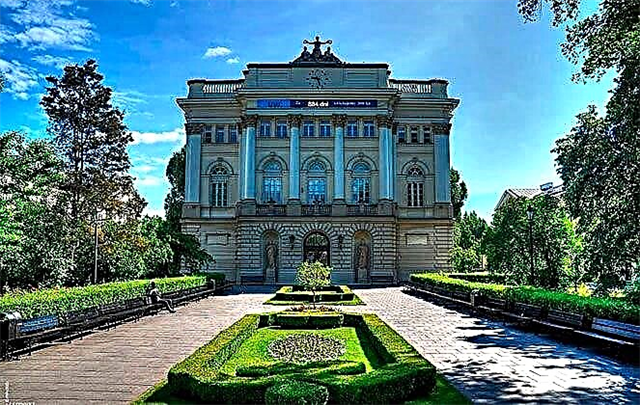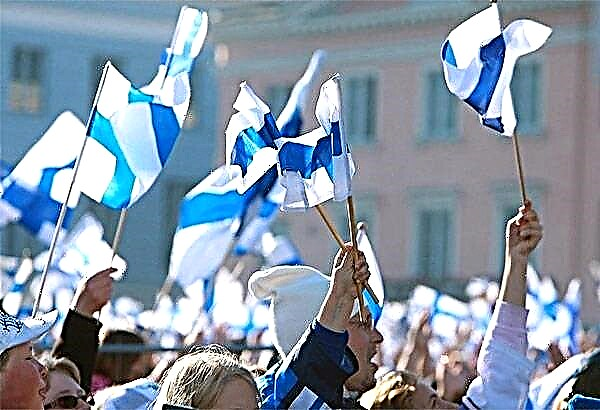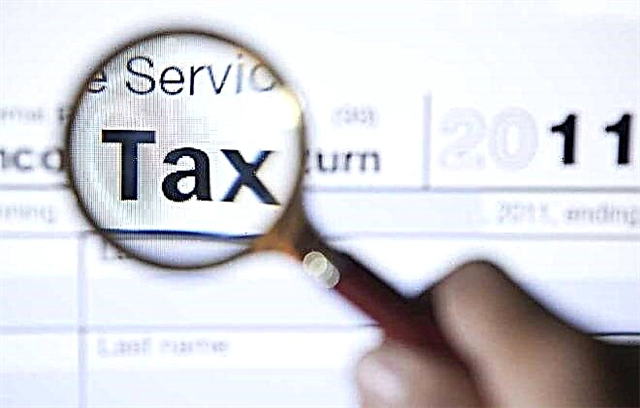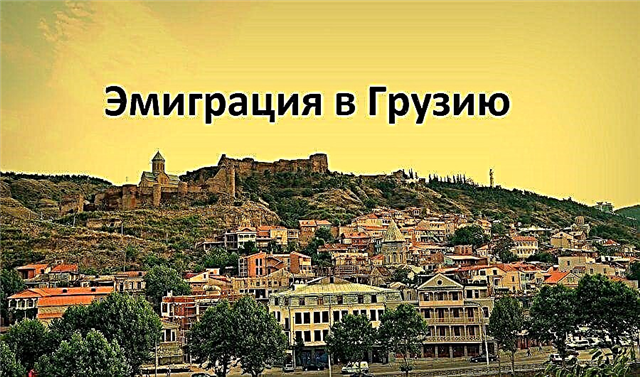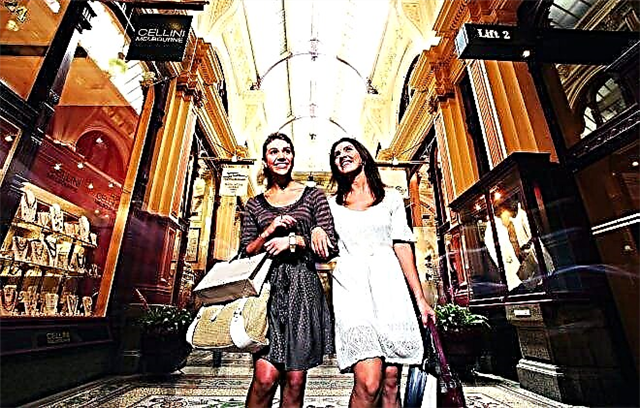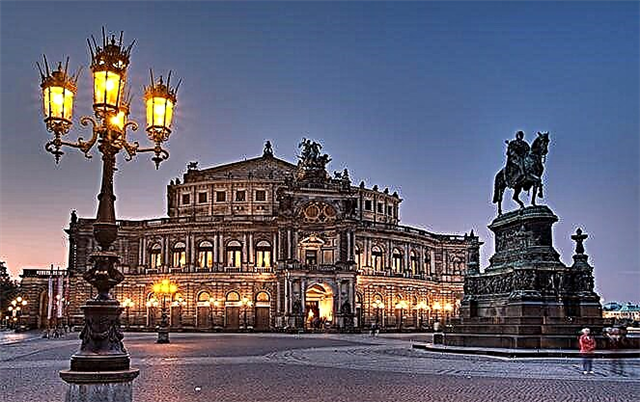The Dresden State Opera, named the Semper Opera after its chief architect Gottfried Semper, is located in a square in the city center. The luxurious three-storey building attracts the eyes of Dresden residents, guests and tourists.
The theater was built in 1814, many terrible events fell to its lot, but despite this, the Dresden Opera was preserved almost in its original form. Today it is considered one of the most beautiful theaters not only in Germany but throughout the world. If you want not only to get to know Dresden, but also to hear his voice, be sure to include a visit to the Semper Opera in your excursion program.
Theater history
The opera house in Dresden is named after the architect who designed the building for the opera. The theater is located in the Old Town, near the Zwinger and Dresden Palace on Theater Square. Two centuries before the foundation of the opera, the square was literally "overgrown" with theaters - nine buildings were erected nearby at once.
One of the first permanent theaters in Germany operated on the site of the Semper Opera.
The earliest mentions of the State Opera in Dresden date back to the 17th century.
Then, at the court of the Saxon Elector, they began to stage musical performances. From 1816 to 1826, the head of the theater was Karl von Weber.
In 1841, a new building for the Court Theater was erected on this site. In 1869, the opera was damaged for the first time in a fire. A temporary building served as the theater for four weeks, and then Gottfried Semper designed a new one.
The Semperoper did not survive the bombing of Dresden in 1945, only the outer walls and façade have survived. The restoration work began in 1977 and lasted 8 years. The next opening of the theater took place on February 13, 1985.
Interior
Wolfgang Hensch, who was entrusted with the restoration work in the post-war years, relied on interior designs for the so-called Second Opera, a building that existed between the fire and bombing of Dresden. In those days, the city authorities did not skimp and used the most expensive materials for the design of the opera.
The restored building is in no way inferior to the original. For example, stucco and gilding were used to decorate walls and ceilings. All halls and vestibules are decorated with tapestries, wall paintings, massive columns support the giant building.
The Semperoper has an auditorium decorated in a classical style, its capacity has been reduced to 1300 people. The seats are upholstered in red fabric, and a huge chandelier can be seen on the ceiling.
The frieze above the stage also attracts the attention of guests - it depicts famous characters of theatrical productions, for example, Desdemona, Othello, Mephistopheles and Goethe's Faust.
A clock made by the royal watchmaker Johannes Gütkes is visible next to the frieze. They are located above the stage and make it possible to view the time from the last rows, even in dim lighting during the performance.
Notable opera premieres
The Dresden Opera became the first creative home for many works that later became classics. It was here that the premieres of Richard Wagner's operas The Flying Dutchman, Rienzi and Tannhäuser took place. For the first time, it was at the State Opera in Dresden that the works of Richard Strauss - "Salome", "Der Rosenkavalier" and "Electra" were performed.
The Dresden Opera served as a concert hall for one of the oldest and most revered orchestras in the world - the Saxon State Chapel.
In the already renovated building, for the first time, the public was presented with the following works: "Song of Love and Death by Cornet Christoph Rilke" by Siegfried Matus (premiered on February 16, 1985), "The Golden Pot" by Ekehard Mayer (premiere in 1989), "Great Magic" by Manfred Troyan (premiered May 10, 2008).
Dresden theater directors
For the entire period of the opera's existence, it was directed by five people. The first reliable information about the leader is associated with the name of Nikolaus Graf von Zebach - he held this position from 1894 to 1919. He was replaced by Max Gerd Schönfelder. The Dresden Opera lived under his leadership for six years.
A significant contribution to the development of the theater belongs to Christoph Albrecht, he was responsible for the operation of the opera from 1991 to 2003. Until 2021, Gerd Uecker held the position of the head. The current leader is Ulrika Hessler, the first woman to hold such a position.
Famous people of the opera
At different times, famous and eminent people, both conductors and soloists, have worked in the opera in Dresden. Richard Wagner rightfully occupies a special place among them.
It is worth mentioning such well-known conductors who worked within the walls of the theater as Ernst von Schuch, Fritz Reiner (he took part in Dresden productions from 1914 to 1921), Karl Boehm (he stayed in the theater from 1934 to 1942), Joseph Keilbert, Rudolf Kempe, Kurt Sanderling, Hans Wonck, Semyon Bychkov, Bernard Haitink, Fabio Luisi, Christian Thielemann (works in the theater from 2021 to the present day).
The opera is also known for its soloists, among them were Irena Abendroth, Theo Adam, Matthew Ahlersmeier, Bernd Aldenhoff, Kurt Boehme, Christelle Goltz, Werner Liebing, Teresa Malten, Christa Mayer, Melitta Otto-Alvsleben, Elizabeth Retberg, Richard Tauber and many others. opera performers.
Theater poster in 2021
In 2021, the Dresden State Opera has planned more than 20 performances each month, which means an unforgettable theater season awaits tourists and art lovers alike.
In May, the premiere of the opera The Force of Destiny by Giuseppe Verdi will take place, and in June the audience will also be offered to enjoy the premiere ballet production of 100 Degrees to the music of Dirk Haunbrich and Ludwig van Beethoven.
At the end of July 2021, the opera was first shown Oedipus King by Igor Stravinsky and The Prisoner by Luigi Dallaniccola (two operas in one evening).
In addition, this year will be staging already loved by the public performances, for example, "Carmen" by Georges Bizet, "The Flying Dutchman" by Richard Wagner, "Don Juan" and "The Marriage of Figaro" by Wolfgang Amadeus Mozart, "Rigoletto" by Giuseppe Verdi and many other operas ...
All the necessary information about the schedule is contained on the official website of the opera.
Prices for tickets and excursions
The Dresden Opera is open not only for those wishing to listen to opera, but also for tourists. Excursions, including a story about the architecture and history of the theater, are also conducted in Russian. During such an excursion, you can visit rooms inaccessible to ordinary spectators and hear the main secrets of the hall's acoustics.
The price of the excursion for one person is 11 euros, students pay only 7 euros. A so-called family ticket is also offered, it costs 25 euros and allows two adults and five children under eighteen to visit the opera.
Tours run from 10 am to 6 pm.
In the evening, you can visit the State Opera only for a theatrical performance. Since the hall is huge, the ticket prices vary considerably. The cost of an admission pass to the ballet starts from 20 euros and goes up to 120. Tickets for operas are sold more expensive - the price of one, for example, for the performance of "Rigoletto" can be 150 euros.
The performances usually start at 19.00.
You can buy a ticket at the theater box office, on the official website, or using the services of intermediaries.
Companies offer Russians to book a ticket to the performance, so that when visiting Dresden, be sure to go to the State Opera.
How to get to the theater
The address of the Dresden Opera is Theaterplatz 2, 01067 Dresden, Saxony, Germany. The easiest way to get to the Semper Theater is by tram, route 11 or 8 will do.You need to get up at the Postplatz stop for route 11 and at the Theaterplatz stop on the eighth.
Conclusion
The Dresden State Opera is a real landmark in the city. It has a unique history and is famous for its many performances and renowned workers.
In its best years, the opera gathered excellent composers, soloists and conductors under its roof, and today, with great inspiration, it demonstrates works that have already become classics. There are not only performances, but also excursions - you can visit the opera in the daytime with a ticket for 7-11 euros, admission to the performance costs from 25 to 200 euros.

